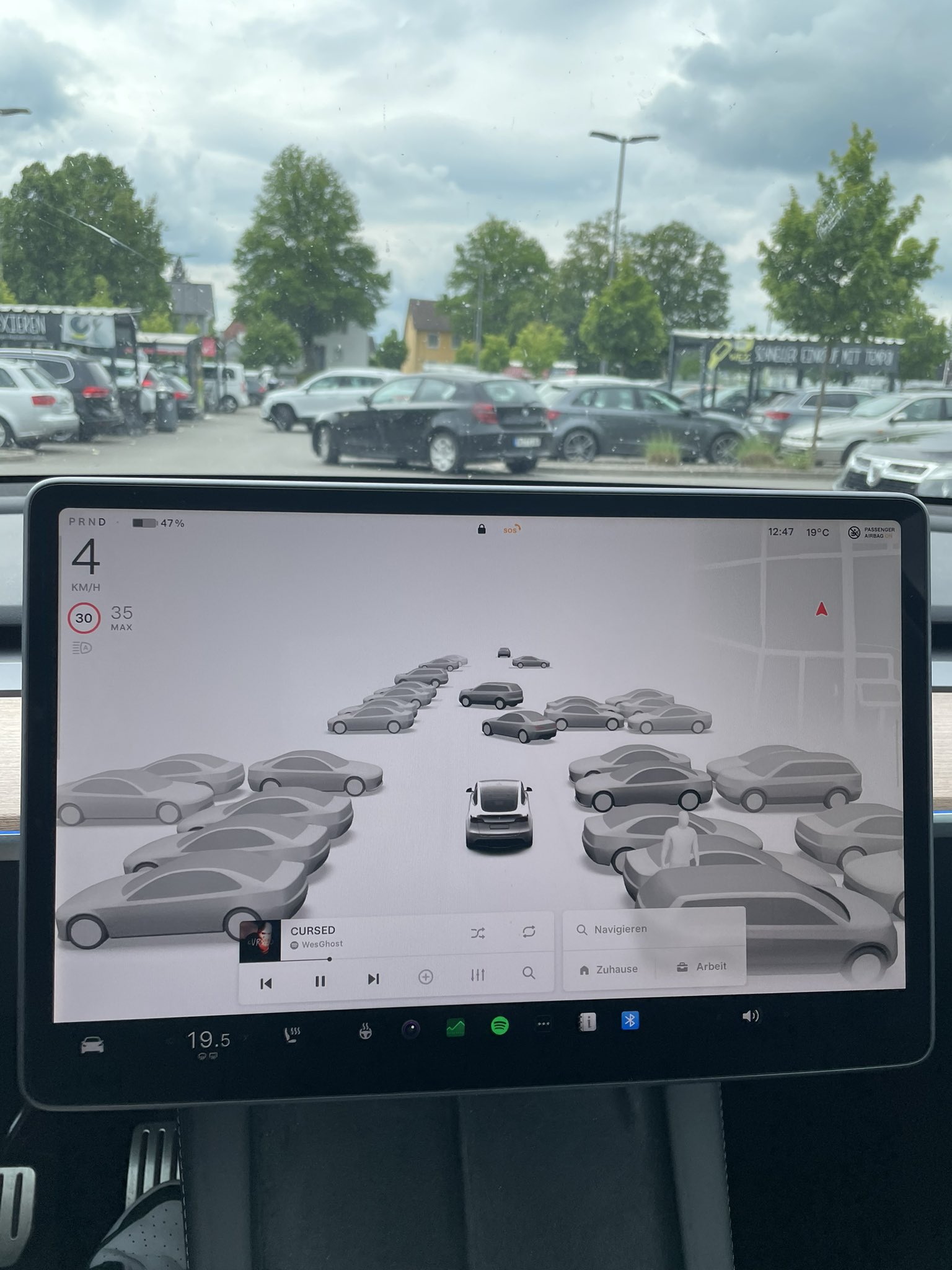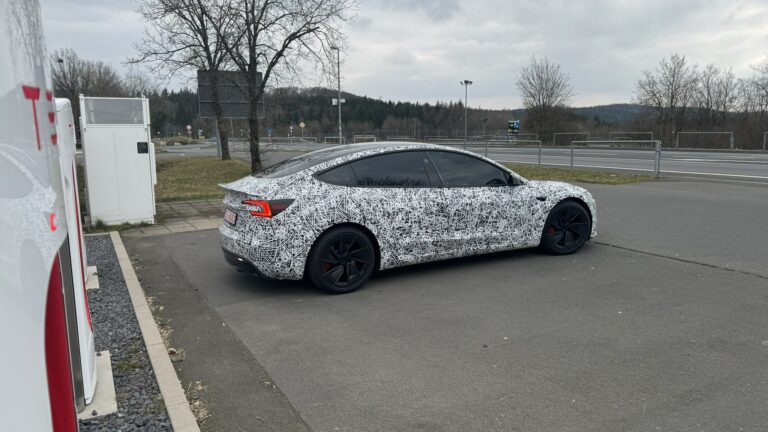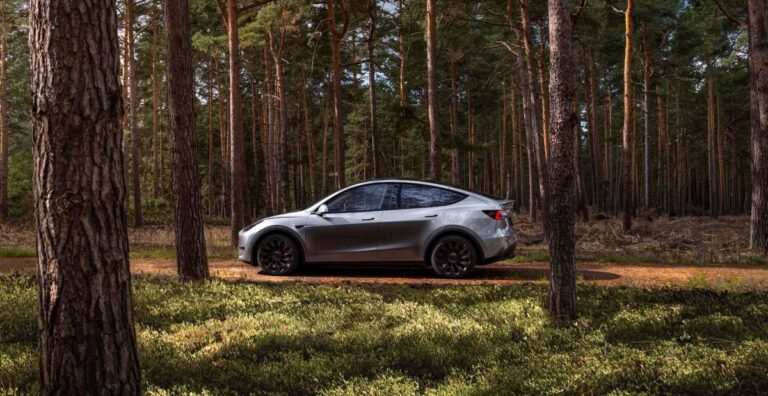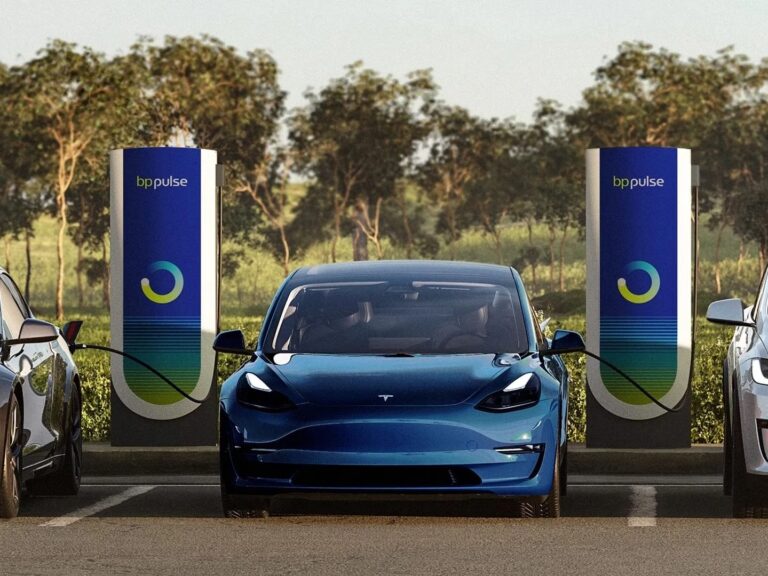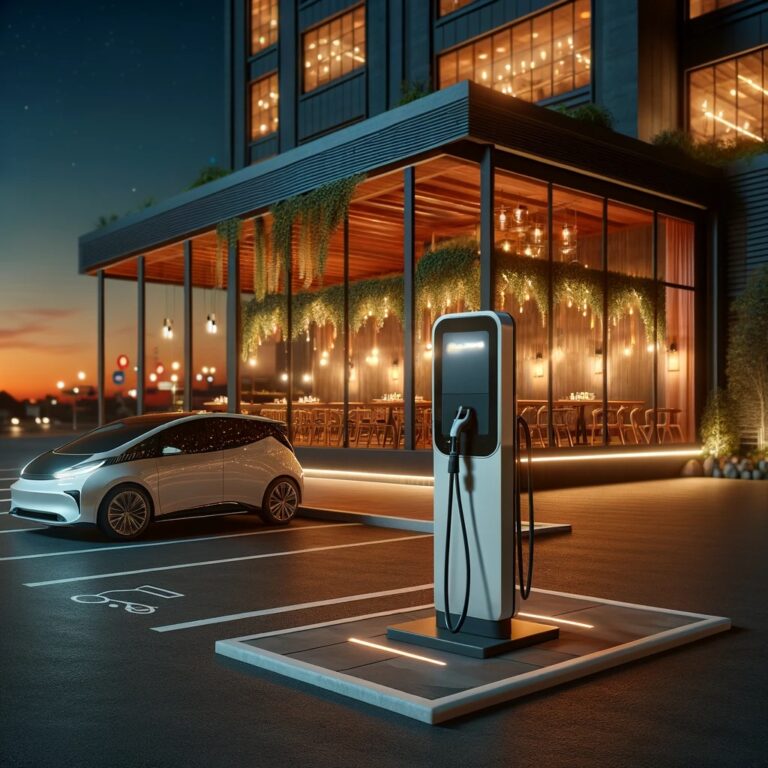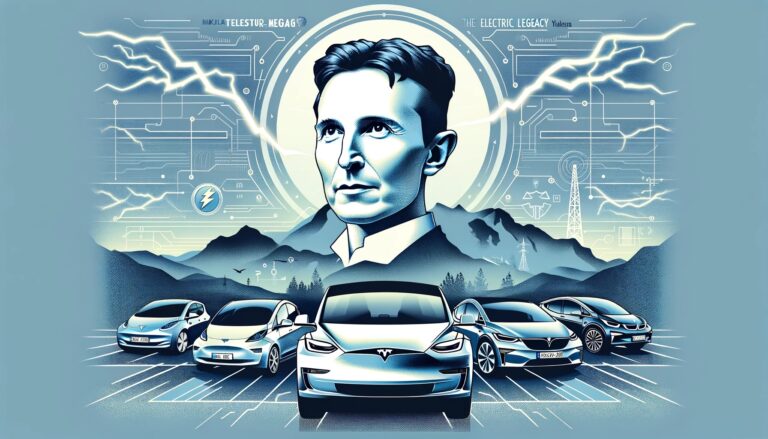All vehicles around your vehicle are on screen
In the automotive world, technology is evolving by leaps and bounds, particularly with the innovations brought by Tesla electric vehicles. A particularly impressive aspect of this development is Tesla Vision, the computer vision system that powers Autopilot and other advanced features in Tesla vehicles. This article explores the difference between what the Tesla screen sees and the reality of a parking lot, illustrating how the Tesla Vision perceives and interprets its environment.
What is Tesla Vision?
Tesla Vision is an advanced system based on the exclusive use of cameras, which replaces traditional radars. This system processes visual data to enable autonomous or assisted driving. Using image processing and machine learning algorithms, Tesla Vision interprets the vehicle’s surroundings in real time, which is crucial for navigation and safety.
Comparison between Tesla Screen and Reality
The photo provided offers a fascinating insight into how Tesla Vision interprets a typical parking lot. On the Tesla’s screen we can see a 3D graphical representation of the cars around the vehicle. These images are generated from data captured by the vehicle’s cameras.
Accuracy of Details
- Tesla screen: The vehicles around are represented with simplified and stylized shapes. The screen also shows traffic flow and other relevant information like vehicle speed and direction.
- Reality : On the outside, the vehicles are, of course, much more detailed and varied in terms of color, shape and size.
Coverage and Viewing Angle
- Tesla screen: The viewing angle is widely extended, providing a 360-degree view around the vehicle, which is impossible for the human eye from a fixed position.
- Reality : Vision is limited to what the driver’s eyes can see, affected by physical obstacles, weather conditions, and other environmental factors.
Responsiveness to Changes
- Tesla screen: Real-time updating allows immediate reaction to surrounding changes, such as moving vehicles or new obstacles.
- Reality : Human perception may be delayed or less accurate, especially in low light or high activity conditions.
Impact on Driving and Safety
The advantage of Tesla Vision lies in its ability to provide constant and fatigue-free interpretation of the environment, thereby reducing the risk of accidents caused by human error. Continuous monitoring and accuracy of processed data enable safer and more efficient driving decisions, even in complex conditions.
Conclusion
Tesla Vision represents a major breakthrough in autonomous vehicle technology. By comparing the visual representation of Tesla’s screen and the reality of a parking lot, we can appreciate the sophistication of this technology which not only improves safety but also paves the way for a future where autonomous driving could become the norm. Tesla continues to push the boundaries of what’s possible in automobiles, bringing us one step closer every day to a safer, more connected world.
